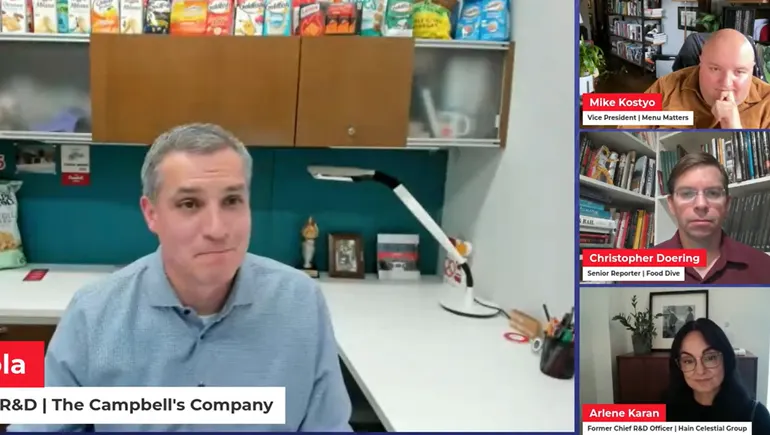In today’s fast-paced world, social media and the increasing trend of at-home consumption are driving food companies to innovate at a rapid pace. Traditionally, food innovation was primarily seen in restaurants where chefs would experiment with flavors and ingredients to surprise and delight consumers. However, with nearly 40% of Americans dining out less frequently, consumers are now turning to grocery aisles for inspiration.
This shift has created both opportunities and challenges for major food companies, as discussed during The Future of Food & Packaging Innovation virtual event hosted by Food Dive and Packaging Dive. The grocery shelves are now filled with innovative products that draw inspiration from a variety of cuisines and trendy ingredients like pickles and hot honey. Consumers have a wide range of options to choose from to recreate the restaurant experience at home.
Mike Kyosto, vice president of consulting firm Menu Matters, highlighted the increase in consumer innovation in home kitchens in recent years. The supermarket shelves now boast global products in the frozen food aisle that were previously unseen. This surge in consumer innovation has put pressure on companies to launch products that can stand out in a crowded market.
George Vindiola, head of enterprise research & development at The Campbell’s Company, emphasized the need for speed in innovation to keep up with social trends, dietary preferences, and changing demographics. The pace of innovation has significantly increased, requiring companies to act quickly to seize business opportunities.
The influence of social media has also accelerated the lifecycle of ingredient trends, with flavors like Dubai chocolate losing consumer interest in just a few months. This has led companies to question whether to chase every trend or focus on fewer, bolder innovations. Campbell’s, for example, is prioritizing larger “platform innovation” over limited flavors and collaborations for its Goldfish brand.
Arlene Karan, former chief research and development officer for Hain Celestial, highlighted the risks involved in focusing solely on one innovation strategy, especially for smaller companies. With thousands of new products introduced each year, the failure rate is high. Launching a new product requires sustained investment and attention, akin to raising a child from infancy to maturity.
Hain Celestial is taking a broad approach to innovation by investing in a few large, bold innovations supported by smaller bets. The goal is to grow the trajectory of innovation while managing the high risk profile associated with new product development. Overall, the food industry is evolving rapidly, requiring companies to adapt and innovate to meet the changing demands of consumers in today’s dynamic marketplace.


